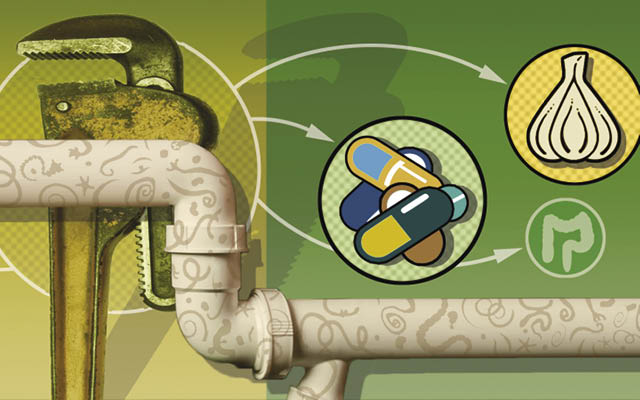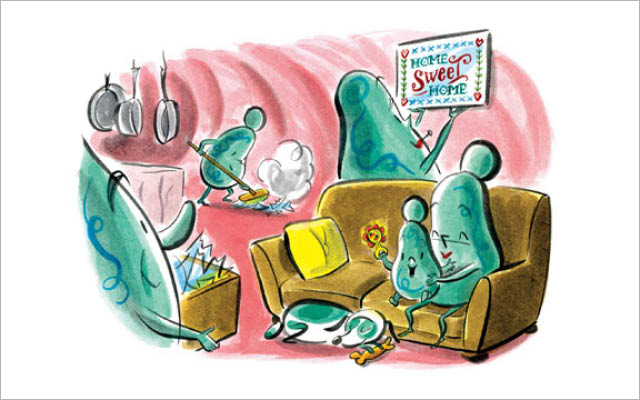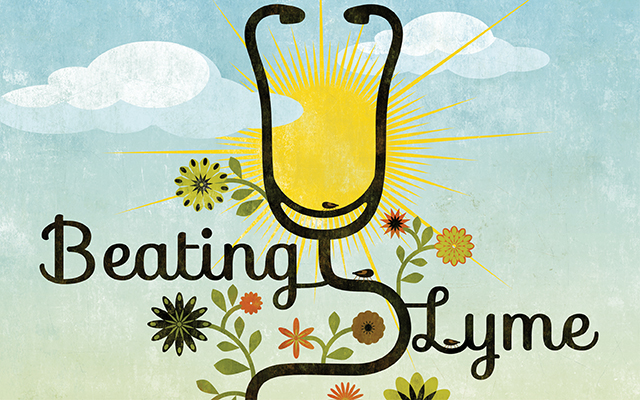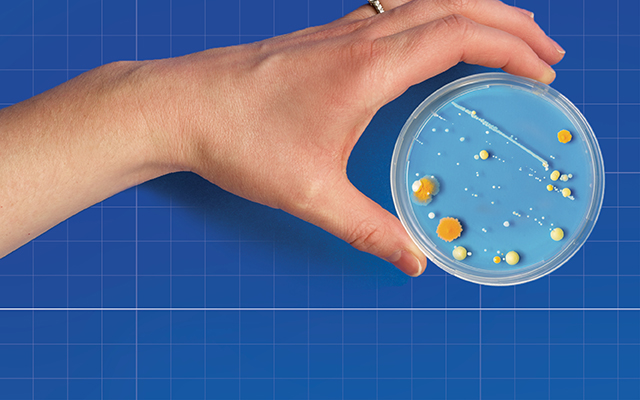In 1999, Judy Smith (not her real name) was a single mother in Chappaqua, N.Y., struggling to care for her young autistic son. For years, he had spent much of his time in the basement, gyrating on a swing. Chronic gastrointestinal issues made his stomach so distended he resembled a malnourished child; his affect was so flat he seemed absent from the world.
When doctors pushed for a stomach feeding tube, his mother pushed back, putting her son on an elimination diet instead. It reduced his digestive discomfort, but his malaise and apathy remained.
Dissatisfied with this partial improvement, Smith began exploring another approach. She had read a piece in the New York Times about helminthic therapy, a treatment that uses carefully calibrated doses of intestinal worms to address inflammatory disorders.
The researchers believed a lack of exposure to worms and other so-called parasitic hazards might be tied to the rise in allergies, autoimmune diseases, and other chronic ills. Autoimmunity (which includes more than 90 diseases) is the third most common illness in the United States after cancer and heart disease.
This inspired the researchers to experiment with controlled exposure to intestinal organisms that were once common in all of us — such as hookworm, tapeworm, and whipworm — as a way to treat inflammatory autoimmune conditions.
While the research in the article focused on inflammatory bowel disease (IBD), Smith wondered if it might help her son. The more she investigated, the more evidence she found to support their approach.
Reports from scientific journals had begun to tie doses of helminth worms to improvements in autoimmune diseases like multiple sclerosis (MS) as well as complex illnesses like autism — which was critical for Smith’s son.
She soon learned about a gastroenterologist at Tufts University School of Medicine named Joel Weinstock, MD, who was treating children suffering from IBD with a potion made of porcine whipworm larvae. The microscopic eggs are suspended in saline solution and drunk from the vial; some people take them with milk or applesauce.
In 2007, after years of research, Smith procured some vials of the larvae from an internet vendor and administered them to her son.
She describes the change she witnessed as “a little miracle.” He wasn’t cured of autism, but his behavior changed profoundly. For the first time in a decade, he began leaving the basement and spending time upstairs, watching television with the family. On his birthday, he didn’t ignore the cake Smith had made, as he had before, but actually blew out the candles. “That was the best day of my life,” she remembers.
Helminthic therapy is still a somewhat controversial treatment; researchers compare it to fecal microbial transplants. At present, some progressive medical professionals are willing to oversee the protocol, but most people who wish to try it are left to order the worms online and conduct the treatment themselves, as Smith did.
An outpouring of recent patient reports and data published in prestigious peer-reviewed literature supports the approach. Classic autoimmune illnesses, as well as neuropsychiatric issues ranging from autism to depression, appear to respond well to helminthic therapy.
The treatment’s premise stems from the hygiene hypothesis — the idea that overly sterile environments have sparked an increase in autoimmune diseases, caused by the body’s immune system attacking itself. Giving the immune system something external to ambush — namely, the organism — appears to help correct this process. These exposures activate the regulatory side of the immune system, which dampens any tendency to overreact to benign stimuli.
Biophysicist William Parker, PhD, who specializes in immune-system research at Duke University, says autoimmunity isn’t the result of just excessive hygiene, but the loss of biodiversity in our environments. This includes reduced exposure to organisms that can live in us — not just the single-celled organisms that make up the microbiome, but also the larger worms that compose what some scientists now call the macrobiome.
We evolved with a variety of organisms that helped train the immune system, he explains. Without them, it can run amok. And this is why some researchers are now rethinking the role of many so-called parasites.
When Parasites Are a Problem
Intestinal parasites have a bad reputation, and they often deserve it: There are strains that can lead to both acute and chronic issues, some severe.
Michael Swenson (not his real name) was so sick that he scored his gut pain at 9 on a scale of 10. He suffered from diarrhea and constipation, often felt nauseated and gassy, and avoided so many foods due to allergic reactions that he’d lost 20 pounds. Yet for more than a year, a long line of doctors, some at major teaching hospitals, could find nothing wrong. Many offered him the vague diagnosis of IBD and often recommended he see a psychiatrist.
When Swenson began working with Connecticut-based functional-medicine physician Kara Fitzgerald, ND, in 2015, his occupation provided her with an important clue: He worked in a long-term-care facility, often a hotbed of infection. She sent out a stool sample for a highly sensitive microbial DNA analysis.
Fitzgerald soon discovered what other physicians had missed — Dientamoeba fragilis, a single-celled organism that can cause nausea, cramping, and chronic diarrhea. A short course of antiparasitics relieved most of his symptoms in just a few days. But rebuilding his gut would be a longer, equally important journey.
There’d been no reported outbreak of infection in Swenson’s workplace, which suggested to Fitzgerald that he had weak “colonization resistance” (difficulty resisting harmful intestinal microbes) thanks to an imbalanced microbiome. So she prescribed more therapy, including botanicals, probiotics, and an elimination diet, which provided more lasting relief. Fitzgerald believes it was the treatment for the Dientamoeba fragilis that cleared the path for healing.
New technologies offer providers a heightened ability to see bugs, but a positive test for an organism, Fitzgerald says, is seldom conclusive. “Just because you unknowingly ate a little worm with your salad and we find its DNA does not mean it is making you sick,” she explains. She has to rule out a host of other possible causes before she decides if it’s clinically relevant.
Humans are biologically diverse, almost to an infinite degree. This is in part due to where we grow up. Someone raised in the United States by parents born in India might get sick from the tap water while visiting grandparents in Mumbai, whereas that person’s mother can still drink Indian tap water decades after moving away without problems. Different environments create different immune tolerance.
So when a patient with a blatant parasitic infection shows symptoms of nausea, diarrhea, bloating, gas, vomiting, fever — even arthritis — Fitzgerald prescribes classic antiparasitics. But when the parasite seems like a piece of the illness puzzle rather than the main culprit, she uses gentler botanicals like wormwood or garlic.
“Virtually all indigenous cultures have excellent parasite cures,” notes clinical nutritionist Liz Lipski, PhD, MS, CCN, author of Digestive Wellness. “When I studied Hawaiian medicine, it seemed that nearly every other plant I studied was used to cure parasites.”
Lipski identifies several of the most useful agents to use when parasites seem to be a smaller part of a larger health picture:
- Garlic’s active agent, allicin, can fight pinworms and giardia.
- Berberine is also good for countering pinworms and giardia.
- Wormwood features an active ingredient called sesquiterpene lactone, which weakens parasitic membranes in pinworms, roundworms, and others.
- Black walnuts, pumpkin seeds, the Chinese herb chang shan, and Jerusalem oak (a time-tested folk remedy for hookworms) are also popular.
Restoring the Macrobiome
Since we expect intestinal organisms to make us sick, the notion that they can also be used to heal is a little confounding. Yet research into helminthic therapy increasingly suggests that certain organisms can benefit human health in surprising ways.
The treatment has been studied for decades. In the 1990s, Tufts’s Joel Weinstock, then at the University of Iowa, noticed that inflammatory bowel disorders appeared almost exclusively among wealthier people who lived in the most hygienic environments. Meanwhile, studies he read and then conducted suggested that exposure to intestinal worms could protect mice against colitis and other autoimmune disorders that affect the GI tract.
By 2004 Weinstock was running a trial involving patients with two types of IBD: ulcerative colitis, which afflicts the colon, and Crohn’s disease, which can inflame the colon and other areas of the digestive tract. He had subjects ingest calibrated doses of Trichuris suis whipworm larvae, which develop into worms in pigs but are easily vanquished by humans.
The results, published in 2005, reported that 80 percent of the Crohn’s patients improved and nearly three-quarters went into remission; more than 40 percent of those with ulcerative colitis got better as well.
Another notable study soon followed. Argentine neurologists Jorge Correale, MD, and Mauricio Farez, MD, tested helminth exposure for treating MS. Their findings, published in 2007, showed the therapy significantly reduced relapses in the trial’s 12 MS patients. Later research found that the worms seem to suppress the precise immune molecules that worsen MS symptoms while also provoking protective genes.
As word of these studies spread, people desperate for relief from autoimmunity began to self-treat with helminths purchased online. And more scientists took interest, including Duke’s William Parker. His early research convinced him that an immune system gripped by autoimmunity was typically underdeveloped. Its haphazard defense strategy was, quite literally, dumb.
He compares the dysregulated autoimmune response to a security force with only grenades to use as protection. As a result, it doesn’t always hit its target, and collateral damage is immense. To Parker, it seemed like “adding a single, intestinal worm could have a profound effect.” With a worm to attack, a trigger-happy immune system could calm down and focus.
Parker partnered with sociologist Janet Wilson, PhD, to study people who were self-treating with helminths. Their multiyear survey, published in 2015 and 2016, examined almost 1,000 cases in which the treatment helped alleviate a host of inflammatory conditions, including IBD, allergies, and migraine headaches.
Surprisingly, those taking helminths for inflammatory issues often reported psychological benefits as well: Depression lifted, anxiety dissipated, posttraumatic stress disorder abated, and thinking became clearer.
One patient reported a substantial improvement in symptoms of attention deficit disorder. (These results are consistent with other research tying systemic inflammation to a range of psychiatric conditions, including depression and schizophrenia.)
At the same time, other physicians were conducting similar research with a large group of autism patients who were being treated with helminths. In addition to improved GI symptoms, they reported less sleep disturbance, agitation, aggressiveness, and teeth grinding, as well as fewer tics. To the degree that autism is an inflammatory condition, as new studies suggest, this made sense.
“These organisms can do for us what no drug can, much like exercise,” Parker says.
That perspective is shared by Sidney Baker, MD, a former Yale pediatrician who spent two years as a Peace Corps volunteer in Chad, where parasitic coexistence seemed to inhibit autoimmunity. “I examined and lived with beautiful, healthy, wonderful people,” he says. “I saw tropical diseases like tuberculosis and malaria, but I never saw the kind of inflammatory and autoimmune problems we see in the West.”
This experience led to his interest in helminthic therapy. Now a strong proponent, Baker has created a line of helminths that practitioners can dose as precisely as medicine. He cultivates Hymenolepis diminuta, a species of rat tapeworm often found around farms and grains that co-evolved with human agriculture.
Rats are hosts to the tapeworm and its eggs, as are grain beetles (commonly found in grain supplies). When a beetle ingests rat excrement that contains tapeworm eggs, the eggs develop into mealy worms inside the beetle, Baker explains. Each one is a pupa called Hymenolepis diminuta cysticercoid, or HDC for short. These pupae are the heart of Baker’s treatment. He calls them his “little dudes.”
When it grows in the intestine of a rat, a tapeworm egg becomes a full-fledged worm. But in a human, the immune system typically conquers the egg before a worm can develop. This is how the HDCs help to modulate and regulate the immune response. (Only in rare cases do HDCs become adult tapeworms, which Baker says another medicine can easily eliminate.)
Baker describes this process as the “restoration of immune tolerance.” It’s a precious feature of all complex systems, he explains, and it’s especially critical for proper immune function.
“The immune system is meant to tolerate food and germs,” Baker adds, including some microscopic organisms, just as the eyes are meant to tolerate light and darkness.
The Parasite Balancing Act
There are now parasite zealots at both ends of the healthcare spectrum. Some claim parasites are the root of all ills and promise that purging will restore vibrant health; others see intestinal organisms themselves as a cure-all.
“Yes, it’s hyped in some instances,” functional physician Kara Fitzgerald concedes. Extreme purges, for instance, can damage the gut, especially when parasites are not at the root of the illness. And detoxing without physician guidance can sometimes create more illness than a parasite itself.
Likewise, helminths are still an unregulated treatment. Even Parker acknowledges that there are only a few truly credible vendors and suggests patients identify and stick with them.
Fitzgerald recommends that patients seek a recognized clinician who knows the turf to avoid the risks inherent to self-treatment of a serious health condition. “The very botanicals used to treat parasites — wormwood, for instance — can also damage your liver if you take too large a dose or treat for too long,” she warns.
Only a stool test read by a qualified physician can guarantee that you’re using the appropriate treatment.
Likewise, caution is necessary with helminthic therapy. Along with the accolades, peer reviews continue to be peppered with warnings and criticisms. The worms may be dangerous for people with suppressed immunity, for instance. And, as with fecal microbial transplants, the U.S. Food and Drug Administration is not yet on board.
The agency has published concerns about “deliberate self-infestation” and notes that, without regulation, there remains potential for other “contaminants and/or allergens.”
As always, there are no magic bullets for complex chronic conditions. There are, however, basic health tenets that support anyone caught in their grip.
Melissa Manus, a PhD candidate in biological anthropology at Northwestern University, worked for a public-health NGO in South Africa five years ago. While on vacation in Swaziland, she and a friend got caught in a jungle of reeds while river paddling and were likely exposed to some biting insect living on the grasses. Both women developed a “whole slew of red dots” on their skin.
Although Manus’s rash cleared, she soon became desperately ill with explosive diarrhea, nausea, striking weight and hair loss, and a host of food allergies — all signs of chronic, hyperinflammatory illness.
Doctors found no underlying infection, but Manus says she was ultimately able to return to health with the help of Baker’s “little dudes.”
Still, even she believes the helminthic therapy was only part of the picture. “Other aspects of life are equally important to regulating inflammation and the immune system: managing stress, eating a healthy diet of nonprocessed food, and getting the right amount of vitamins and exercise.”
Unlike pharmaceuticals, Manus says, helminthic therapy is not a “one-stop-shop treatment. It’s part of a more holistic approach toward health.”




This Post Has 0 Comments